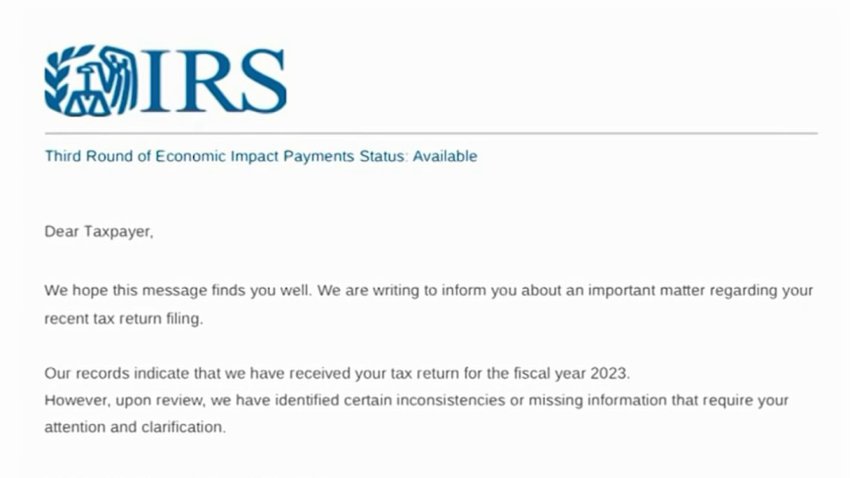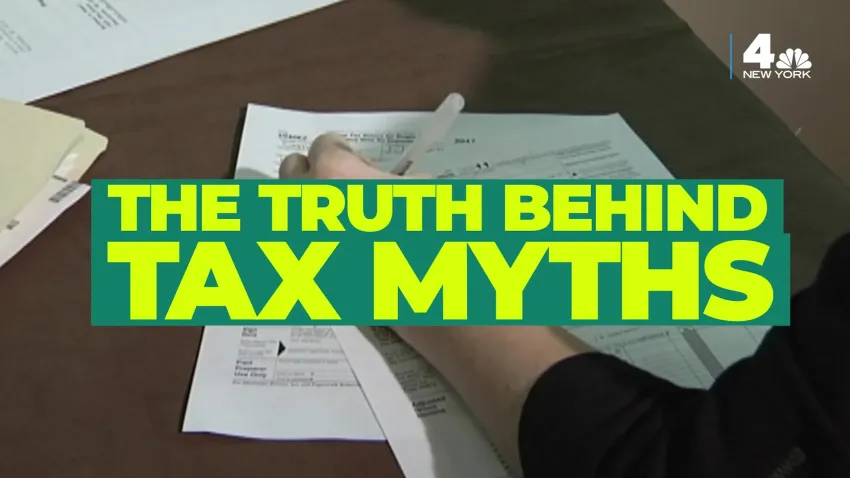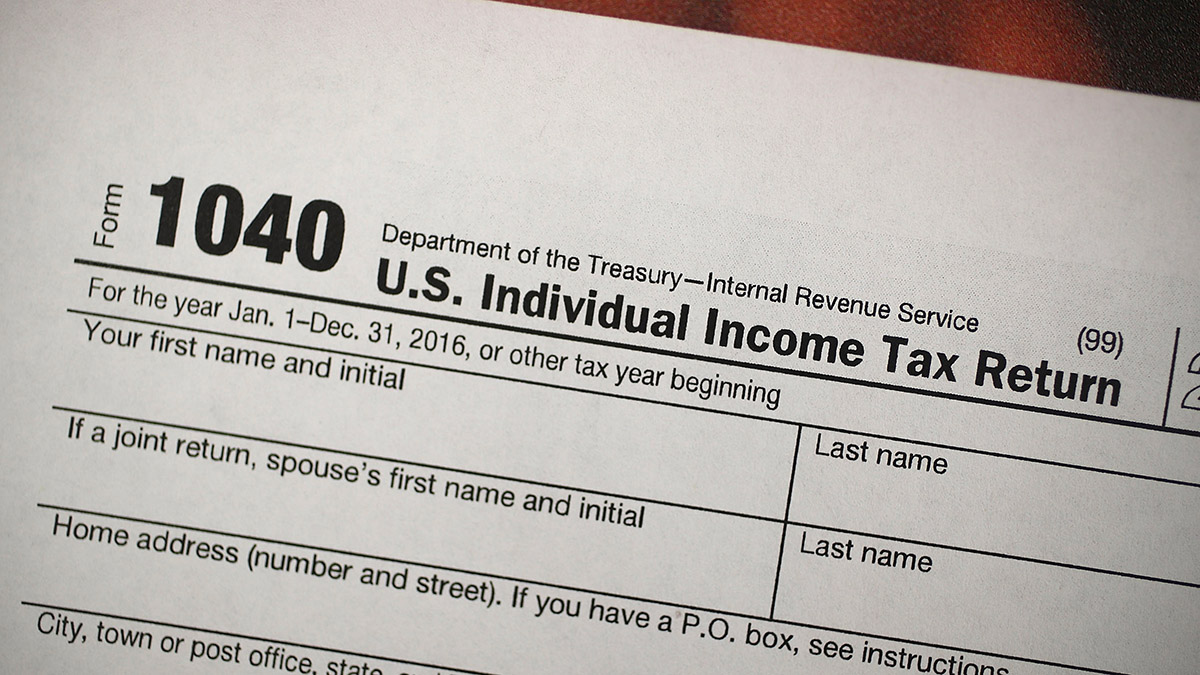Direct File is a filing tool by the IRS that allows taxpayers of any income to file their taxes for free.
Tax season is here again in the United States and as millions of Americans file their 2024 taxes with the Internal Revenue Service, one of the questions most often asked is "Where is my refund?"
The 2025 season officially kicked off January 27 and the IRS expects more than 140 million tax returns to be filed by the April 15 tax deadline.
Tax season this year comes amid layoffs of roughly 7,000 IRS probationary workers beginning in February, which will likely mean the end of the agency's plan to go after high-wealth tax dodgers and could spell disaster for revenue collections, experts say.
Watch NBC 4 free wherever you are
Will the layoffs affect how soon you get your refund?
IRS begins layoffs of some probationary workers
Get Tri-state area news delivered to your inbox with NBC New York's News Headlines newsletter.
The majority of employees shown the door at the federal tax collector are newly hired workers focused on compliance, which includes ensuring that taxpayers are abiding by the tax code and paying delinquent debts, among other duties.
The IRS layoffs, one of the largest purges of probationary workers this year across the government, could also hurt customer service and tax return processing during tax season this year, the union representing Treasury Department employees warned Thursday.
Vanessa Williamson, a senior fellow at the Urban-Brookings Tax Policy Center, said on a Thursday call with reporters that the layoffs at the IRS will disproportionately harm enforcement efforts.
“When you underpay and understaff the IRS, the agency doesn’t have the power or the resources it needs to go after wealthy tax evaders with their high priced lawyers,” she said, adding, “The result is, of course, a disaster for revenue.”
Representatives from Treasury, the IRS and the White House did not respond to Associated Press requests for comment on Thursday.
IRS Direct File program
The Inflation Reduction Act, signed into law by President Joe Biden in 2022, gave the IRS $80 billion and the ability to hire tens of thousands of new employees to help with customer service and enforcement as well as new technology to update the tax collection agency, though congressional Republicans later clawed back some of the money.
The IRS said it is expanding its program that allows people to file their taxes directly with the agency for free. The federal tax collector’s Direct File program, which allows taxpayers to calculate and submit their returns to the government directly without using commercial tax preparation software, will be available to taxpayers in 25 states starting Jan. 27, up from 12 states that were part of last year's pilot program.
The pilot program in 2024 allowed people in certain states with very simple W-2s to calculate and submit their returns directly to the IRS. Those using the program claimed more than $90 million in refunds, the IRS said in October.
How long will it take to get my refund?
The IRS expects most refunds to be issued in less than 21 days.
"Nine out of 10 taxpayers will see their refund within 21 days of filing, and often sooner," former IRS Commissioner Danny Werfel told CNBC in early January.
The IRS says some refunds could take longer if your return requires "additional review."
"Many factors can affect refund timing after the IRS receives a tax return. Although the IRS issues most refunds in less than 21 days, the IRS cautions taxpayers not to rely on receiving a refund by a certain date, especially when making major purchases or paying bills. Some returns may require additional review and may take longer," according to the IRS.
Where's My Refund IRS tool
The agency says taxpayers can use Where’s My Refund? to check the status of their 2024 income tax refund within 24 hours of e-filing. Refund information is normally available after four weeks for taxpayers who filed a paper return.
"If you e-file your return, you can usually see your refund status after about 48 hours with Where's My Refund? You can get your refund information for the current year and past 2 years," the IRS said.
The agency also said it expects to maintain levels of service achieved in the past, including wait times of less than 5 minutes for assistance.
"Wait times are longer on Mondays and Tuesdays, during Presidents Day weekend and around the April tax filing deadline," the IRS website says.

IRS contact information for tax help
The IRS has a number of tools and resources available for help here.
Individuals can call the IRS at 800-829-1040 from 7 a.m. to 7 p.m. local time for assistance while business can call 800-829-4933 during that same time window.
The IRS said wait times are longer Mondays and Tuesdays.
Two goals for the upcoming tax filing season are to offer 10,000 extended office hours and to expand the IRS rural outreach program by 20%, increasing the number of returns prepared. The agency said it also continues to simplify notifications to make language simpler to understand.
IRS Commissioner Daniel Werfel also said the IRS is working to improve public awareness of the Earned Income Tax Credit, stating that nearly 1 in 5 eligible taxpayers don’t claim it because they don’t know about it or realize they qualify.
As in past years, the IRS also urges filers to guard against tax scams, stating that bad actors proliferate during filing season, making false promises of tax help or fake threats to get people to pay penalties they don’t owe. Filers can visit IRS.gov and search “scams” for the latest information.
Multiyear supplemental funding provided by Congress allows the IRS to maintain its current staffing levels, the commissioner said on the call, adding that the IRS’s technology and tools will stagnate if the funding is eliminated.
“This has been a historic period of improvement for the IRS,” Commissioner Werfel said. “More can be done with continued investment in the nation’s tax system.”

When are my taxes due?
The tax filing deadline is April 15, 2025 for the 2024 tax year, but if you have any questions, you should check with the IRS or a tax professional.
The Internal Revenue Service has additional information on its site here.




